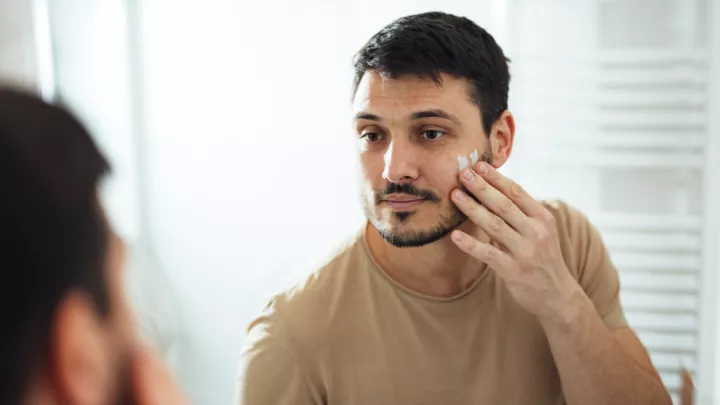How can I cure jock itch fast?

Jock itch is a common fungal infection. Typically, jock itch occurs in areas like the groin or inner thighs, appearing as an itchy, scaly rash that can also become cracked or develop bumps. At times jock itch can also have a circle-like appearance similar to ringworm.
Risk factors for jock itch
“A warm and/or moist environment is conducive to jock itch,” says Katherine Lester, University of Nebraska Medical Center first-year dermatology student. “For example, if you keep your wet or sweaty clothes on after exercising – it’s an ideal environment for the fungus to grow.” So, if you sweat a lot – whether during exercise or not – you may be at greater risk of developing jock itch.
Additionally, women can get jock itch, but it’s more common in adolescent or young adult males. Other factors that increase your risk for jock itch include improper hygiene or having diabetes or another immunocompromising condition.
“Make sure you’re not sitting around in sweaty clothes and showering regularly,” says Lester.
Symptoms of jock itch
As mentioned, a primary symptom of jock itch is an itchy rash in the groin or upper thigh – usually excluding the scrotum and penis. “So, if you do have a rash in those areas, it’s likely not jock itch,” says Lester.
Other common attributes of jock itch include the edge of the rash having a scaly, thicker border that’s well-defined. The affected skin may also look redder or pinker than it typically appears.
Is jock itch contagious?
Jock itch is a contagious condition. You can spread jock itch through skin-to-skin or sexual contact or by sharing infected surfaces (like a towel or clothing). Another way jock itch can spread is if you have athlete’s foot.
Those with athlete’s foot can spread the fungus to their groin by touching it after touching the infected foot; likewise, you can spread athlete’s foot to your groin via clothing. So, it’s best to put your socks on first, before your underwear, to prevent the spread of a fungus from your feet to your groin.
Treating jock itch
“The typical treatment of jock itch is a topical antifungal cream – many of which you can buy over the counter,” says Lester. “For example, creams with terbinafine are effective in most cases.”
Patients who use a topical cream should apply it to the entire area of the rash, ensuring you get into the creases of your skin and around the edge of the rash, approximately an inch past its border.
“If you don’t see improvement after a week – you need to see a dermatologist,” says Lester. “They can prescribe a stronger antifungal cream or an oral antifungal medication.”
You can also use a drying powder – miconazole nitrate – to help keep the skin folds of the groin/legs dry and prevent jock itch. Note that miconazole nitrate is an antifungal powder specifically for jock itch and other fungal or yeast infections. Other drying products, like baby powder, can help prevent jock itch but don’t have the active antifungal ingredients.
Simply avoiding tight-fitting clothing can help with prevention as well. While jock itch usually responds well to treatment, there’s a chance it can recur.
Don’t wait to treat jock itch
The fungus that causes jock itch likely won’t disappear on its own. Additionally, if you don’t treat it, the fungus can spread to other areas of your body like your nails, hands or feet.







